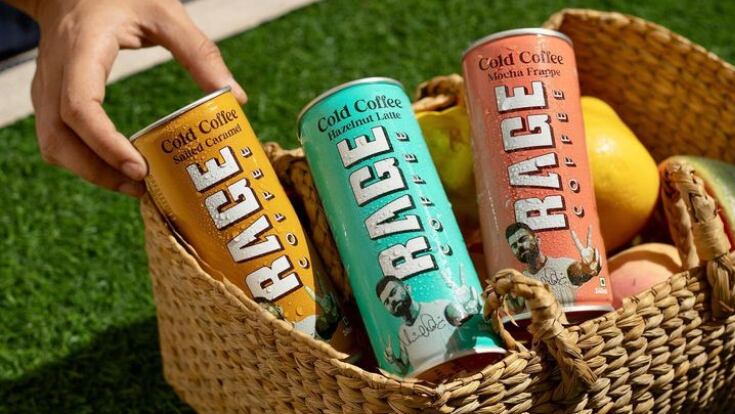The firm has also outlined how it hopes to drive sales overseas, especially among the Indian diaspora in the Middle East, US, and wider Asia region.
FoodNavigator-Asia had previously covered Rage Coffee’s early years of cracking the coffee market in a predominantly tea-drinking nation.
Its founder and CEO, Bharat Sethi, revealed that its RTD launch taps on the familiar flavour of milk among Indian consumers to further penetrate the country’s coffee market:
“We started to think about a RTD cold coffee with dairy. Most Indians consumer tea with milk and dairy products. Our thesis was that if we had to really create a dent in the market, we need to be innovative with the product offering and create something that gives consumers the nostalgia of drinking that in their homes or cafes. That was the premise of why we even started thinking about doing an old coffee in a can.”
Sethi cautioned that while it uses India’s dairy tradition as an entry point, the challenge was in its formulation to achieve a balance of coffee and milk:
“It’s a challenge that everyone faces in this industry, where the coffee becomes a milk shake and no longer a coffee. However, we managed to use manufacturing techniques to make the flavours shine, whether it’s in the soluble or liquid format, while not overpowering the coffee. We have a 30,000 square feet production unit commissioned in last October, which we blend close to half a ton of coffee daily.”
Distribution
Launched last month, it touted to have sold close to about 100,000 units currently.
Sethi said that the start-up has delayed launching its RTD series after the pandemic as offline retail channels are key for the success for this offering. It is currently available on its website, main e-commerce platforms like Blinkit, Flipkart and Amazon, and more than 7,500 offline touchpoints in four metropolitan cities.
“As the RTD is a premium product, we are quite careful with the placement because we don’t want to place it in outlets where there is no demand. We place them carefully in where we feel there is a potential to sell. Therefore, they are sold in the top four cities, namely Delhi, Mumbai, Bangalore, and Hyderabad,” Sethi explained.
Its RTD is available in 240ml cans for 140 rupee (USD $1.71) per can.
It has also partnered with about 15 cloud kitchens, and with hotels, cafes, and restaurants for distribution as well.
The start-up sees a huge export opportunity for its RTD series, as it is currently in the talks with distributors from some countries in the Gulf Cooperation Council (GCC), North America, Africa regions. In Asia-Pacific (APAC), it is eyeing on Singapore, Hong Kong, and Japan where it claimed that there is a significant Indian diaspora.
“With GCC, there’s a lot of Indian customers who have settled there and have communicated to their networks through word of mouth, and we’ve received the request to supply the product there. Similar with the Africa region, mostly via word of mouth. We are primarily responding to these incoming demands.
“Beyond that, we have not gone out actively to do any extensive marketing in any of the countries outside India yet. I think that should happen soon, but I think we're just kind of building on the Indian opportunity right now. That's what is the most exciting to us personally.”
Coffee: “A hotbed for innovation”
Its RTD coffee is available in mocha frappe, salted caramel, and hazelnut latte. Sethi explained that hazelnut and chocolate are universally accepted flavors, while salted caramel is growing rapidly in Indian food services, such as ice-creams and pastries.
It will be launching four more flavors – namely butterscotch, English toffee, orange, and another caramel – within the next six months.
When it comes to new product development, the start-up teased that there are currently “doing many experiments with coffee.”
Some trends include the use of coffee flavor in beverages like cocktails and mocktails, rising demand for convenient formats at home and outside, a growing interest in coffee equipment and brewing techniques, and increasing consciousness of coffee sourcing relating to the fourth wave of coffee.
While there is aplenty innovation potential for coffee, the start-up is carefully treading India’s emerging market for coffee as it makes the transition:
“If we’re complicating coffee for the consumer, we’re not doing justice to our mission, which is to provide a great cup of coffee to an average consumer specifically in the Indian market. And we want to get more and more consumers to start drinking coffee.
“Until it gets to a mature stage, we can look at a finer play with equipment, brewing techniques, sourcing and so on. So, we’re very careful with what we’re doing in terms of ambition. We don’t want to create a Rolls Royce and give it to a customer who is driving under city.”

